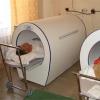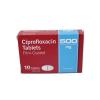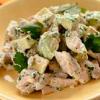Tooth with a pin. Tooth extension - different methods and their cost. Advantages and disadvantages of using pins
Dental pin - the second life of your tooth
Dental restoration is a vast field of dentistry that includes many different ways to save a tooth. The choice of one or another method depends on the degree of destruction of the dental crown. For example, if caries has affected a small area of tooth enamel, then the integrity of the organ will be restored by filling with composite light-cured fillings. If caries has reached the pulp chamber and caused inflammation of the nerve, as well as decomposition of dentin tissues, then most likely a filling or ceramic insert will be used. But what to do if only miserable memories remain from the hard tissues of the tooth?
Do not rush to go to the dentist-surgeon and remove the remains of your tooth - there is still hope that the organ can be saved. Even if only roots remain from the tooth, it can still be saved. A competently restored organ is better, more reliable and more natural than the highest quality bridge or implant.
The pin as the “reinforcement” of dentistry
The destruction of the side walls of the crown leads to the fact that the filling material simply has nothing to attach to. But if at the same time the root is preserved, and there is no inflammation of the periodontal tissues, then the organ is subject to restoration of the tooth on the pin.
A pin is a dental needle that is installed in the root canal of a tooth. It performs the function of a reinforcement, a fastening element, on which a composite filling is applied. Modern pin placement technology has advanced a lot, and today this method has a number of advantages.
- Full restoration of the dental crown from the ruins.
- Preservation of natural root tissues.
- The life expectancy of such an organ is doubled.
- Returns functional and aesthetic properties to the tooth.
- Allows you to choose the material of the pin, to which the patient will not have an allergic reaction.
Indications and contraindications for the installation of a support rod
The relevance of tooth restoration on a pin is possible in several cases:
- with the destruction of the tissues of the dental crown by more than 80%;
- to create the basis of a removable prosthesis or bridge structure;
- to preserve the thin walls of the crown of a pulpless tooth.
The installation of the supporting pin becomes problematic if the examination of the tissues of the causative tooth gave the following results:
- the thickness of the walls of the root canals is less than two millimeters;
- periodontal tissues are inflamed or have a deformed structure (cysts, granulomas);
- the integrity of the root canals is in doubt - there are signs of a carious lesion or perforation of the canal as a result of the removal of nerve tissue;
- The patient has poor blood clotting.
If contraindications are confirmed by a more thorough examination, then most likely the dentist will prescribe the removal of the causative tooth instead of installing a pin. Sometimes it is more reasonable to install an implant than to make a poor-quality crown restoration.
pin classification

Products for strengthening the tooth are divided into metal and non-metal. The first category includes pins made of brass, titanium, palladium, various gold alloys and stainless steel. Metal pins are stronger than hard tooth tissues. Therefore, with a strong load on the crown, the pin can damage the walls of the root canal. However, in general, this method of restoration has fully justified itself: many people have successfully used such teeth for ten years or more.
The above metals are classified as non-allergenic. The greatest biological compatibility is observed in gold alloys. In rare cases, individual intolerance to a dental pin can manifest itself as signs of inflammation in the tissues of the tooth and a general malaise of the body.
The most popular among them are fiberglass. They are an alloy of binder and glass tubes. One of the main advantages of such products is their plasticity: with a significant load on the tooth, such a pin will not break and will not spoil the root tissue, but will bend a little. Then the tooth pin independently returns to its original form. In addition, the fiberglass rod has a natural milky color, which allows you to install a crown made of translucent composite material on it. Such a tooth will retain the natural shade of hard tissues for many years, unlike the pins of previous generations, which were translucent and made the crown dark.
According to the principle of installation, the pins are divided into passive and active.
Passive
These fixing elements have a one-piece structure without threads. They are placed in the root canal using cementing agents and are often combined with a so-called core inlay. If the degree of destruction of the hard tissues of the tooth is high, then a separate fragment is installed on the bottom of the crown, which is fastened together with the pin and replaces the base of the tooth. This method justifies itself if the indications exclude other methods. The only negative can be considered the lower reliability of the installation, compared with the active pin.
Active
A fiberglass or metal pin is screwed into the root canal of the tooth. Its structure has a thread of various sizes, which is selected based on the parameters of the root canals. However, this method has some limitations. If, for example, the walls of the root canal are too thin, or the canal itself has been enlarged when the nerve tissue has been removed, then insertion of the rod becomes too dangerous. Even an experienced dentist will not always be able, acting blindly, to screw in a screw without damaging the integrity of the root tissues of such a tooth. Even the slightest crack in the canal, which no one will notice, will lead to the fact that over time, the periodontal tissues surrounding the root can become inflamed.
Installation procedure
 After all the preparatory stages have been carried out and you, together with the dentist, have decided on the type of tooth restoration on the pin, the price, then you can proceed with its installation and crown extension.
After all the preparatory stages have been carried out and you, together with the dentist, have decided on the type of tooth restoration on the pin, the price, then you can proceed with its installation and crown extension.
The sequence of actions is as follows.
- An anesthetic is injected into the area of the causative tooth. Even if the organ has been “dead” for a long time, and you do not feel the action of the drill, you should still anesthetize the recovery area, since the work will take place at a fairly deep level, and sensitivity may occur. For many patients, pain medication is a calming factor, a kind of protection for the psyche.
- The root canal is thoroughly cleaned from the tissues of the old material, all carious tissues of the tooth are also to be removed.
- The cavity of the crown is treated with an antiseptic, a rubber dam is applied to isolate the organ from saliva.
- A pin is installed in the prepared channel by cementing (if it is a passive rod) or screwing.
- The space between the pin and the tissues of the root canal is filled with a cementing agent. Hardening is carried out with the help of ultraviolet rays.
- After the stump tab is installed, a dental crown prosthesis can be applied to it. If it has not yet been made, then measurements are taken and the natural shade of tooth enamel tissues is selected. With a pre-made prosthesis, the installation of the crown occurs at a time.
The network of clinics "LeaderStom" in such cases can offer the manufacture of a ceramic crown using the Cerec technology. This is a unique technique that allows you to carve and install a prosthesis in one visit. So you save money on the laboratory and prosthetists, and at the same time reduce the number of visits to the dentist.
The restoration process with a post can be considered complete if the tooth “behaved” normally within a week and there was no rejection or allergic reactions. It should be remembered that the best prosthesis does not replace a healthy tooth. After recovery, you should be attentive to your oral cavity: avoid very hard foods, do not neglect hygiene, regularly visit your dentist for preventive purposes. If suddenly you feel any painful symptoms of a causative tooth, then immediately consult a doctor. Be healthy.
Tooth decay can occur as a result of a number of pathological processes. In turn, a violation of the dental anatomical shape causes problems not only with the teeth, but also with chewing, speech, and aesthetic appearance.
To restore the natural shape of the teeth, their functionality, extensions are used, an example of the latter is restorative pin structures:
- pin teeth;
- stump structures (artificial crown on a cast stump tab with pins);
- (filling extension).
Restorative pin constructions (tooth crowns on pins) consist of:
- pin - a thin rod fixed in hard dental tissues with the help of an adhesive material or structural features;
- the part to be restored (installed by extension or prosthetics).
pin tooth- this is actually an artificial tooth on a pin, which is fixed in the canal of the preserved root.
The most popular among specialists are structures made of an artificial crown fixed on a stump, which is connected to a pin.
Indications, applicability and choice of construction type
General indications for the use of these structures are:
- the need to build up when it is destroyed or completely absent (the degree of defect is estimated by the ratio of the area of the defect and the area of the chewing surface, building up or a pin crown is shown at a ratio of 0.8 or more);
- violations of the placement of the front tooth with the ineffectiveness of orthopedic therapy;
- the need to form a support for the bridge.
In general, you can put a pin structure on almost any tooth (as well as build up). This method is less effective when it is necessary to install a pin on the front tooth (lower), which has a narrow, often impassable, canal and thinned root walls.
The choice of pin design (tooth extension, installation of a crown on a pin) depends on:
- type of tooth (many/single root);
- features of the interaction of the components of the chewing system, contact of the teeth.
General contraindications for crown post placement
- obstruction of the channels, excluding the installation;
- thin walls and insufficient root length;
- periapical pathology that interferes with build-up;
- atrophy of the jaw bone tissue;
- root destruction in excess of 25%;
- root wall defect from a quarter of the length or more.
Fixation of the crown with a pin is possible only if the root is in an appropriate condition (which determines the relative disadvantages of the method):
- stability in general, supragingival hardness;
- absence of carious lesions;
- wall thickness from 2 mm, for incisors from below - from 1 mm;
- absence of curvature not less than two thirds of the length;
- the ratio of the lengths of the root / part of the crown from one to one and a half;
- canal filling for a third or more of the length in the apical region, closed apical opening;
- absence , ;
- the presence of a free part of the root (sometimes the excess tissue is removed).
Advantages of tooth extension on a pin:
- aesthetics;
- service life of 10 years;
- root preservation (as opposed to implant techniques);
- high functionality.
pin teeth

Pin teeth are differentiated by function, design, production method,. It is allowed to insert a tooth on a pin (the price of the rod itself varies from about 500 rubles in the case of anchor to over 2000 rubles for fiberglass) for single-root teeth of the upper jaw.
According to the material, the pins are distinguished:
- anchor - conical / cylindrical, have a special design (head, shoulder, tail), metal;
- fiberglass - with high aesthetic qualities that do not cause allergic reactions;
- carbon fiber - from a material with high elasticity, similar in properties to dentin;
- gutta-percha - used as auxiliary;
- ceramic - used for minor damage to the tooth;
- parapulpar - metal with a polymer coating and some others.
Active structures are screwed into the bone tissue, passive structures are fixed with cements.
According to the shape of the rod, conical, helical, cylindrical, cylindrical-conical are distinguished.
Installing a pin in a tooth includes the following steps:
Pin installation
- assessment of the condition and quality of the tooth root;
- removal of necrotic tissues, elimination of the focus of inflammation;
- expansion and filling of the canal, its preparation for the introduction of the rod;
- the introduction of a pin rod in about a day (necessary for curing the material in the canal);
- fixation.
All manipulations are implemented, which makes them painless. However, short-term discomfort is possible after discontinuation. Prolonged (several days), severe pain is an absolute indication for a visit to the doctor.
Tooth prosthetics
The next stage is prosthetics (first on a temporary surface to check for rejection, and then on a permanent one), which includes options such as:
- build up a tooth on a pin - a tooth is formed around the rod from a composite or other material;
- put the crown on the pin (the crown is made of metal ceramics, zirconium dioxide, etc.).
The duration of the entire process, even if extension is carried out, is at least a week.
The design features of a pin tooth determine its positive qualities and disadvantages, and, accordingly, the possibility of applying it to a particular tooth. So, for example, a tooth prosthesis according to Ilyina-Markosyan can only be used in incisors and upper canines.
It is also important to take into account the fact that metal structures may cause allergic reactions(this effect is especially typical for nickel). Pain, swelling, redness in the area of intervention, under the crown, require specialist advice and, possibly, replacement of the structure.
The doctor appoints the time of the visit to monitor the effectiveness of treatment individually.
Dental care after tooth extension on the pin
- take prescribed medications;
- eat sparing (for example, mashed) food;
- brush your teeth regularly with a soft-bristled brush;
- stop using toothpicks.
A common question in cases where an extension procedure was performed or a crown with a pin was installed is the question on the topic MRI options.
The presence of metal can distort the results when examining the skull, and some types of materials are also able to heat up / move in a magnetic field. This problem does not always occur, which is why the specialist should be warned about the presence of such structures before the examination.
As for the passage of security control at airports, most of the modern materials used in pin structures, does not "ring". In the event of a disputable situation, X-ray control is carried out (it is pointless to take a certificate from a doctor in advance about the presence of a structure, this does not exempt from the control procedure).
If suddenly a crown with a pin falls out
If a crown with a pin suddenly falls out, the following reasons are possible: poor quality of fixation in the tooth, excessive destruction of dental tissues and a pathological process under the crown. When tissues are destroyed, you will have to abandon crowns, extensions and use ( a crown on an implant costs from 35,000 rubles). In other situations, the timely assistance of a specialist helps to solve the problem by replacing crowns, rods, and re-building.
Stump pin structures

Disadvantages of pin teeth, such as the risk of cementation and tooth mobility, pin/root fracture, difficulties in replacing the core/crowns, inability to use in multi-rooted teeth, cause interest in pin stump tabs with an artificial crown. Dental aesthetics are top notch.
Instead of a regular rod they have a tab, which is a solid block of artificial stump and pin. Such designs are very durable, which allows them to be used for teeth with several roots, even in the absence of dental walls. The crown is given the same color as the other teeth in the row.
Advantages of an inlay system (tightly bonded to the artificial stump post) and an artificial crown:
- good fixation indicators;
- uniform load distribution (as opposed to the build-up method);
- exclusion of the risk of fracture of the rod;
- the possibility of installation on teeth with several, even non-parallel, roots;
- the possibility of replacing the crown, if necessary, without violating the integrity and fixation properties.
Contraindications:
- complex periodontitis, pathological root mobility;
- lack of length, curvature, root obstruction;
- softening of root tissues;
- intractable inflammatory process, pronounced defects of the periapical tissues.
Metal alloys, composites in combination with metal/non-metal pins, ceramic materials can act as inlay materials. Metal stump cast tabs are the most effective.
Stages:
- examination of teeth and drawing up an intervention plan;
- preparation of the stump (there are different ways depending on the severity of tooth decay) and the root canal of the tooth;
- inlay modeling directly in the mouth or by means of a two-phase impression (gypsum, wax);
- placement in the tab channel;
- fixation and production of an impression for the manufacture of a crown.
The cost of pin tabs is noticeably higher the previous version - from 10,000 rubles, and this is without taking into account how much the work costs, the crown itself. In this regard, the answer to the question of what is better a pin or an inlay for a crown is not always unambiguous: sometimes the core is simply impossible to use, but if there is a choice, then the decision rests on the issue of cost.
Prices for services in our clinics
Please wait for the full download...
The network of dental clinics "Astra" became the laureate and winner in two ratings at once:
We congratulate the staff of all our clinics on this joyful event and express our gratitude for the worthy work!
Teeth, although they are the hardest tissue in the human body, are at risk of mechanical damage every day.
Destruction occurs due to weak immunity, as a complication after diseases of the internal organs.
Doctors face a difficult task to restore the functional and aesthetic qualities of the dentition. But many patients have no idea what opportunities are available for this, and how much it costs to build up a tooth.
Types of restoration
There are specific cases when patients are shown building. These include:
- chipped pieces of enamel;
- cracks on the surface of the tooth;
- injury;
- darkening or demineralization of enamel that cannot be bleached;
- erasure of the surface layer;
- destruction of the caries plan.
When a person loses a part of a tooth or a whole unit, he cannot fully chew food, and such an aesthetic defect can also cause considerable discomfort.
In the recent past, these cases were saved by implants. Modern materials allow you to build up damaged tissue and the tooth returns to its natural integrity and functionality.
To date, there are the following types of restoration in dentistry:
- filling;
- extension with composite materials;
- , Lumineers;
- crowns;
- pins;
- tabs.
Filling is the most common and easiest way to restore the integrity of the tooth body.
Modern fillings are a heavy-duty composition that takes root well, completely growing together with bone tissue. Filling compositions allow you to vary and select the desired color shades.
Extension procedure
Extension is an innovative restoration technology in dentistry. This procedure is not so painfully tolerated by patients, and allows you to save your teeth even in cases where one root remains.
A person with straight, healthy teeth smiles and talks without hesitation, feels confident, and does not have difficulty chewing.

Tooth extension allows you to completely restore damage if they affect no more than 30% of the surface of the crown
When is extension necessary? The tooth may wear out from time to time, have cracks and chips from mechanical shock or chewing hard food. Carious processes also destroy enamel and dentine.
Sometimes one or two teeth grow unevenly. Then they can be ground and built up to the correct shape.
In case of unsuccessful whitening or cleaning, a good result can be achieved by building up the entire contour of the tooth.
Contraindications to the procedure
 Bruxism - teeth grinding at night is the cause of enamel abrasion. First you need to get rid of the cause, then proceed to restore the integrity of the teeth.
Bruxism - teeth grinding at night is the cause of enamel abrasion. First you need to get rid of the cause, then proceed to restore the integrity of the teeth.
Extensions should not be used if there is an allergy to the materials and formulations used in the procedure.
The use of photopolymers
The dentist uses this method of restoration for small violations of the shape of the tooth: a gap between the teeth, a small chip.
For this, polymers are used - composite substances, the hardening of which is carried out under the light of a special lamp. Therefore, they are called photopolymers.

The use of photopolymers allows you to fill in damaged areas after caries, as well as give the crown its original appearance.
This material is able to take any given shape (it is flexible and plastic), and after hardening it is not inferior in strength to natural enamel. It is sometimes used as a protective coating on weak enamel, applied to the entire surface of the crown.
The process of using photopolymers is hampered by the fact that the surface must be completely isolated from moisture ingress from exhaled air or saliva.
 If there is caries, its consequences are first eliminated, treatment with a drill is applied.
If there is caries, its consequences are first eliminated, treatment with a drill is applied.
If necessary, anesthesia is possible. The material is applied in several layers, each of which hardens under the lamp.
Finally, the tooth is given an exact shape, it is ground and polished.
Extension on a pin
If the root is healthy, and the “ground” part is lost, the tooth can be restored by inserting a metal pin into the root canal. Using a computer, the shape of the new unit is modeled. The protruding parts of the rods are surrounded by a solution.
In addition to metal, the pins are made of durable glass or carbon fiber. These materials exclude cracking of the root when inserting the structure.
 Dentists use 4 types of pins:
Dentists use 4 types of pins:
- plastic - flexible, but short-lived;
- from carbonaceous material;
- fiberglass;
- anchor - metal, the most durable.
Veneers
 This applies to teeth in any position in the mouth: anterior, posterior, upper or lower.
This applies to teeth in any position in the mouth: anterior, posterior, upper or lower.
The nerve is removed before the procedure. Such a tooth loses its living strength, so it is reinforced with a stump tab to prevent destruction under the crown.
If there is an inflammatory process in the root zone, it must be cured. Otherwise, the crown will not last long, the formation of painful tissue will begin under it and it will have to be removed.
The restoration procedure with modern materials and technologies is possible even with the complete absence of the outer part of the incisor or molar. The main thing is that the root is healthy, and there is no inflammation on the adjacent bone tissue.
The disadvantage when building is the unpredictability of the material to change color. Many coatings darken or turn yellow, different from the natural shade of the rest of the teeth.
A natural crown can not only be restored, but at the request of the patient, the shape and position of the tooth can be changed. When turning and leveling, you can do without the use of braces, which must be worn for months, and sometimes even years.
Building requires artistic taste and precision of movement of the dentist, who undertakes to “sculpt” a new tooth.

The service life of an artificial crown depends on the composition of the material from which it is made.
How much does it cost?
Restoration of anterior teeth
It is the incisors that most often break off or crack. They receive the first load from solid food, suffer from mechanical shocks when they fall.
 If a person has a standard bite, then over time, the front incisors can simply grind off.
If a person has a standard bite, then over time, the front incisors can simply grind off.
The nature of the damage can be straight, horseshoe-shaped. Depending on the type of wear, the doctor chooses a composite material to restore the integrity of the incisor.
How much does it cost to build up a front tooth? Depending on the complexity of the work, on materials, the price will range from 2.5 to 20 thousand rubles.
Ceramic veneer petals can be glued for 15 thousand rubles per unit.
The cost of building includes materials, anesthesia, a set of sterile instruments. The procedure on average will cost the patient 5000-6000 rubles. For a procedure using composite materials, this price is slightly lower.

Aesthetic restoration eliminates such defects as darkening of the enamel, chips, partial destruction of teeth
Pins are sometimes used for front row incisors. How much does it cost to grow a tooth on a pin? They cost differently, depending on the manufacturer. Domestic fiberglass rods are inexpensive, but not durable.
The metal pin is mainly used on the distant chewing molars. It is impossible to completely hide them on the incisors.
Restoration of chewing teeth
The cost of building in each clinic may be different. The qualifications of doctors, the cost of equipment and materials, the complexity of the work are taken into account.
Restoration of chewing molars is rarely done without the use of pins. How much does it cost to put a pin and build up a tooth? The price of the most "popular" product - an anchor metal pin is about 600 rubles. If it is replaced with fiberglass, the price will increase by 5 times.
Microprosthetics using ceramic or metal inlays will cost 12-13 thousand rubles. One ceramic-metal crown costs from 5 to 11 thousand rubles.
Before restoration work, the doctor will definitely conduct a complete examination of the area using an x-ray.
If necessary, he will prescribe the treatment of teeth and root canals. When an inflammatory process is detected in them, the pulp is completely removed. Treatment also increases the cost of restoration.
As a result, the patient wants to get not only the restoration of tooth function, but also an impeccable aesthetic result. Therefore, it makes no sense to save on the restoration procedure.
Useful video:
Artistic restoration is carried out in the presence of chips, uneven shape of teeth, enamel defects. The dentist-therapist describes in detail the stages of the procedure, and also provides a comparison of prosthetics and aesthetic restoration. The terms "wax-up" and "mock-up" are explained.
4. Carbon fiber. They are very durable. These elements are expensive, as they provide the highest possible efficiency of treatment.
Titanium pins: advantages, disadvantages
They are made from very durable material. Titanium posts in dentistry are used very often. It has high strength, can serve for a long time, have a not too high cost. They are used even if more than half of the tooth is missing. Titanium pins can have different lengths and shapes. It all depends on the root of the tooth.
However, these products also have certain disadvantages. For example, a metal can contribute to the development of an allergic reaction. In addition, it is able to corrode due to the action of liquids or saliva. And titanium pins are not elastic, so they distribute the load on the dentition a little worse.
Anchor products: advantages and features

They are also used quite often. The anchor pin in dentistry is used due to the following advantages:
1. More durable and stronger mount.
2. Possibility of using the root in the event that it is necessary to install overlapping prostheses.
Naturally, such products have all the shortcomings of the metal. It should also be noted that the anchor pin in dentistry can be passive and active. In the first case, cement is used for fastening, and in the second case, the product is threaded and screwed into the root canal. The disadvantage of this element is that it does not have a very attractive appearance. In addition, it is quite difficult to remove it. In some cases, you have to
Fiberglass structures: advantages

Modern dentistry is trying to use all the latest methods and raw materials in the fight against dental diseases. Fiberglass is one of the best materials that has a lot of advantages:
The same high degree of elasticity as dentin.
Good biological compatibility.
High degree of adhesion with the fixing material.
Does not corrode or rust, as it practically does not interact with saliva or other liquids.
Due to the lightness of the product during its installation, the doctor practically does not risk breaking the root of the tooth.
Uniform distribution of the load on the crowns.
Naturally, fiberglass posts in dentistry are not very cheap. For example, the price of such a product may be $30 or more.
What should be considered when choosing pins?

Modern dentistry can offer a large number of solutions in the treatment of a particular dental disease. Pin placement continues to be one of the most common methods for repairing crown failures. However, before you mount them, you must correctly select the presented elements. Dentistry services provide advice from a doctor in choosing a pin. In the process of treatment, the specialist should consider the following factors:
1. The thickness of the tooth root. If it is less than 2 mm, then this method of treatment is considered unacceptable, since a thin pin can quickly break, and the strength of its fixation in the canal will be low.
2. The degree of destruction of the crown.
3. Root depth. If it is smaller than the upper part of the tooth, then the pin will not work in this case, as it can turn out under the influence of chewing load.
4. The load on the crown after its processing. An important factor is also the position of the tooth: it stands alone or it is planned to install a prosthesis.
5. Material of manufacture. It all depends on the individual characteristics of the patient and his biological compatibility with dentin.
6. The financial side of the issue. I must say that modern dentistry (prices for dental treatment can be really high) provides a lot of services. They cost differently. Therefore, the doctor pays attention to whether the patient will be able to pay for the chosen treatment, and selects the most optimal option for him.
In addition, the features of the pins themselves must be taken into account. For example, the cylindrical shape of the product is more preferred. Threaded fixation of the product is stronger. The most optimal is the elastic version of the pin, as it most closely matches the root of the tooth and does not break it during loading.
Installation Features
Modern dentistry (prices for services start at fifteen dollars for tooth extraction) will help to eliminate almost any pathology associated with the installation of pins should be carried out only by an experienced specialist and provides for a certain sequence of work:
1. Depulpation of the crown. That is, the root canals are freed from content and expanded.
2. Insertion of the pin. This should be done so that it is fixed in the jaw bone. In this case, the root of the tooth is significantly strengthened.
3. Use for mounting. Naturally, you should choose high-quality cement that will not crumble and fix the rod well.
4. Actually prosthetics. It is much better if the crown is integrally connected to the post. If the bridge or will not be mounted, then the hole is sealed after installing the pin.
5. After a day, the doctor must check whether the rod is firmly fixed in the root canal. The conclusion is formed on the basis of the specialist's examination and the patient's comments.
What to do after installing the pin?

In order for the restoration of the tooth after the operation to be successful and without problems, you need to follow the recommendations of the doctor:
1. Check the condition of the crowns every six months.
2. Do not chew on solid food, crack nuts or open bottles with your teeth.
3. If the crown is restored, refuse to use toothpicks. It is best to use a special hygienic thread.
4. Be responsible for brushing your teeth. Try to use special antibacterial rinses that help get rid of harmful germs and plaque.
5. If the doctor has prescribed any medication, then do not neglect his advice.
6. At first, try to eat only soft foods.
What complications can arise? And how to deal with them?
Dental services include not only dental treatment, but also constant monitoring of their condition. It must be said that after installing the pin, the patient may experience certain complications: periodontitis, inflammation of the tissues, swelling of the gums and pain.
Naturally, if such signs occur, then you should definitely contact the doctor who mounted the rod. Of course, every person who has been given a pin can feel pain. However, this is often associated with the recovery process, because during the operation, soft tissues are affected, which contain a huge number of nerve endings.
However, if the pain becomes stronger, you should immediately consult a doctor. He should not only make an external examination, but also send you for an X-ray examination.
The appearance of signs of an allergy may be due to the incompatibility of your body with the material of the rod that was chosen. If the condition worsens, other negative signs appear, most likely the pin will have to be removed.
That's all the features of the installation and selection of the presented products. Let your smile be beautiful!
Tooth extension is the most sparing method of restoring the dentition. Its advantage lies in the simultaneous restoration of chewing functions and appearance. There are many extension technologies. Various types of composite materials are used for this procedure.
Extension is a fairly new technology that allows you to completely restore a lost tooth. It is not as painful as other methods, and allows you to save the tooth, even if there is only one root left in it.
Damaged teeth are not only a cosmetic problem, but also an excellent environment for the development of infectious diseases. The cause of injury may be temporary wear, chipping, cracking or carious processes. All these are indications for the procedure.
A contraindication to extension is the presence of an allergy to the materials used for manipulation. It is also recommended to refuse the procedure in case of severe pathologies of the oral cavity and dysfunction of the temporomandibular joint. Some methods have their own contraindications, which the doctor must notify the patient about.
If earlier implants were used for restoration, then thanks to modern achievements, doctors can build up damaged tissue areas. There are the following types of recovery:
- extension with composite materials;
- filling;
- pin restoration;
- installation of veneers or lumineers;
- crown covering.
Photopolymer method
The simplest extension method is the use of photopolymer materials. This technique allows you to completely hide the cavity where caries was treated and restore the natural look. For restoration, only those materials are used that are compatible with gum tissues and do not cause irritation to the mucous membrane.
Most photopolymers contain fluorine. This component allows you to restore enamel even after serious damage. The main advantage of this technology is that there is no need to remove the root. It only takes one session at the dentist to complete the extension.
Composite materials are used for building up in cases where it is necessary to eliminate a chip or remove a stain on the enamel. It will be very difficult to distinguish an extended tooth from the rest.
Installation of a seal
For restoration with the help of filling, special compounds are used that do not damage either the mucous membrane or the enamel. They practically do not differ in color and texture from ordinary enamel.
Modern filling materials make it possible to completely imitate the natural transparency of tooth enamel. The advantages of this type of extension:
- the ability to hide minor defects;
- rapid recovery of chewing function;
- nerve preservation;
- the possibility of adjusting the shape and size of the tooth.
On the video it looks like this:
It is important that the doctor uses high-quality materials, otherwise the filling may simply fall off.
Extension on a pin
Pin restoration is used when it is necessary to create a support. The pin itself can be made of fiberglass or titanium. The use of such a technique will be justified only if the degree of destruction is more than 50%.
The restoration process takes place in the following stages:
- radiography;
- drawing up a model on a computer;
- pin installation;
- formation of the upper part of the tooth.
With the correct implementation of all manipulations, the life of the tooth is extended for many years. A crown may be worn.
Veneers and crowns
Veneers are used for artistic restoration. These are thin plates that are made directly from the patient's cast from a ceramic composition.
The natural coating is almost completely ground off, and veneers are attached in its place. A variety of such plates are lumineers, they are installed without preliminary turning it. This is the most gentle way, but the cost of building a tooth with this method is quite high.
Restoration with a crown is resorted to in cases where other methods will be ineffective. Due to the fact that the tooth is severely destroyed, it can break off directly during the meal. To avoid this and protect it from complete destruction, a crown is installed.
Depending on the material, artificial crowns differ significantly in price. The most common option for the chewing part is ceramic-metal products. For the frontal area, crowns from.
Features of the restoration of chewing molars
The choice of a specific extension technique depends on whether the nerves are preserved or not. To restore teeth with nerves, composite materials with a glass ionomer lining can be used. There is also an orthopedic prosthetic method. It consists in installing ceramic inlays. The doctor is faced with the task of not only restoring, but also preserving the pulp.
The extension of depulped teeth is carried out using:
- fiberglass pins;
- composite materials;
- metal stump tabs;
- ceramic restorative inlay.
When a tooth is left without pulp, its strength decreases, so doctors recommend installing a metal-ceramic crown. In this case, it is practically not painful to make a restoration, since the nerves are dead.
Cost of the procedure
The price of building up teeth from the root can be different. It depends on the location of the clinic, on the qualifications of the specialist, the degree of tooth decay and the materials used to restore it. For example, the price of building a tooth on a pin varies from 400 rubles. for an anchor pin, up to 2,000 for a stump tab. will cost about 1,500 rubles, and to restore half of it, it will take from 5,000 rubles. It is possible to say exactly how much a tooth extension costs only directly in the clinic itself after an examination.
In Moscow, building up with composite materials will cost about 7-8 thousand rubles. This cost includes pain medication, strengthening with a pin and restoration with filling materials. Partial extension will cost from 2.5 to 3 thousand rubles.



















